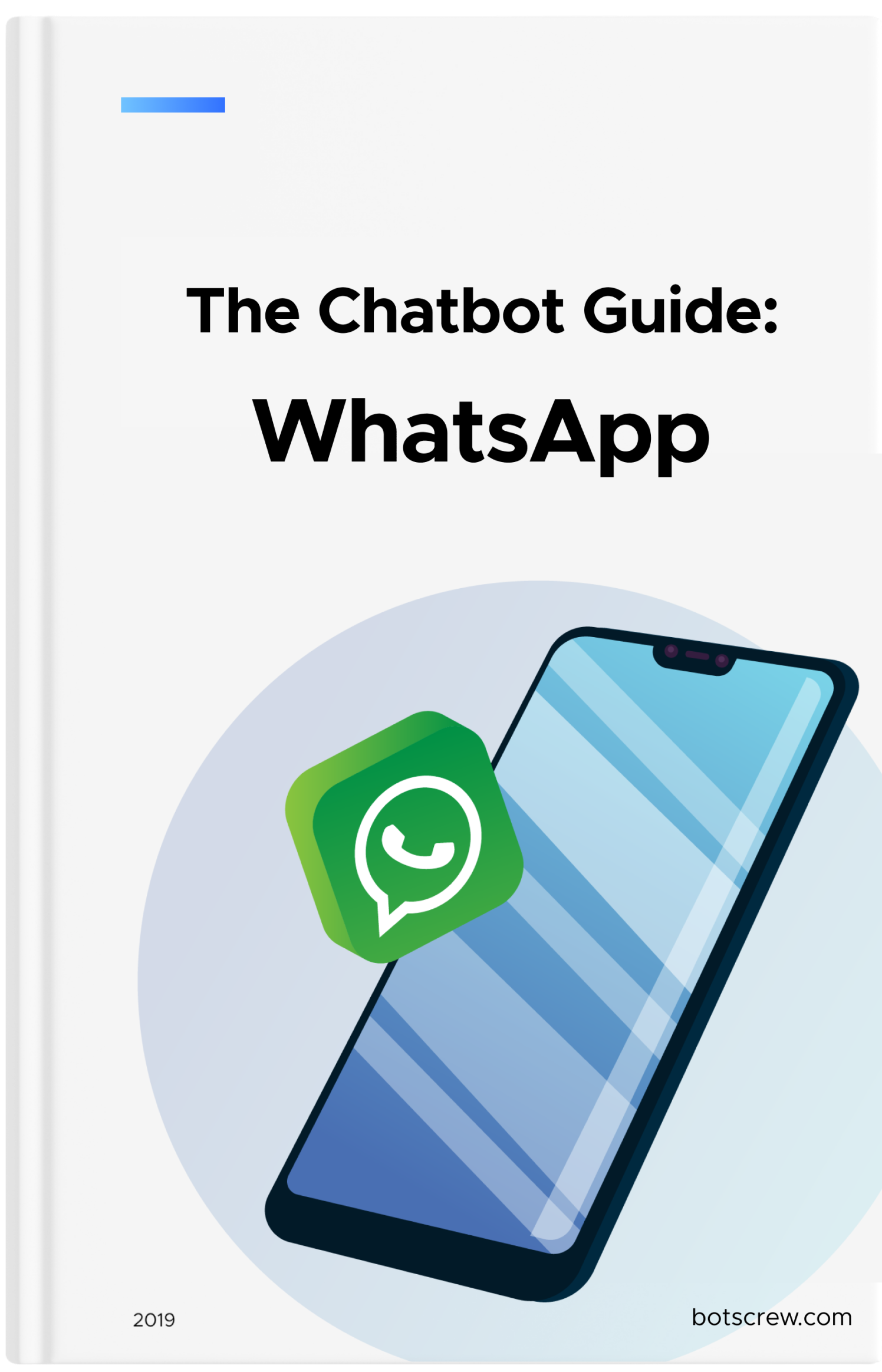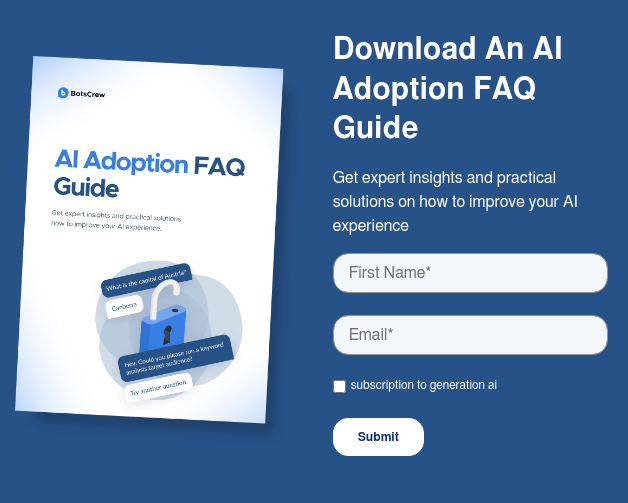Customer Satisfaction: How to Measure, Analyze and Improve It
What is customer satisfaction in a business language? How do you measure it and approach the data for business growth? In this post, we covered the theory and asked a few Customer Experience professionals to give their thoughts on that.

Customer satisfaction is crucial for the online business world today. When any competitor is just a few clicks away, retaining customers is more difficult than ever.
But “satisfaction” seems to be a biased term. What does it mean in a business language? What types of metrics measure customer satisfaction? How do you make sure to you’re providing the utmost buying experience?
We covered the theory and asked a few Customer Experience experts to help us put customer satisfaction inside the business perspective.
Let’s get started!
What is Customer Satisfaction?
Customer Satisfaction is a term used to quantify the level of satisfaction with your services, products, and experience, in general. It measures how a customer feels about interaction with your business at any stage of buying journey. A few examples might be:
- How was their feeling about finding, visiting, and buying from you?
- Did they manage to resolve any issue with the support agent?
- How likely are they to recommend your product/services to others?
All of these points, along with other interactions, form the overall experience of your brand.
Customer satisfaction is applicable to any touchpoint: website, phone, physical stores, etc. In fact, customer satisfaction can be quantified by specific metrics and analyzed on a deep level. For businesses, keeping track of customer satisfaction gives an understanding of their place among competitors and estimates chances to grow returning sales.
“Almost every business has what I call a “leaky bucket." Most businesses are so focused on sales and bringing in new customers that they forget about the fact that the existing customers are the ones that fund their paychecks. Without existing customers, there is no business, so it's critical to ensure they are satisfied – thereby plugging the “leak"." Dan Gingiss, Chief Experience Officer
How to Approach Customer Satisfaction for Growth
What advantage does it give to have a great customer satisfaction rate?
For example, if customers are satisfied with a live chat experience, how does that help to grow your business?
(Except for a hint on giving a raise to your support department)
We asked a few Customer Experience experts about the importance of customer satisfaction for business revenue.
Here’s the expert view from Richard Shapiro, Founder & President, The Center For Client Retention:
“Consumers don't care about customer satisfaction rates. They want a great customer experience independent of how the company measures it. Brand loyalty is comprised of factors such as the quality of the brand, pricing, and the accessibility and competency of the customer service department"
So why bother with measuring customer satisfaction?
"Having good benchmarking data is critical for any brand if they want to know how they score compared to their competitors."
Customer satisfaction is a powerful source of knowledge for growth. Based on customer survey data, you may identify the following opportunities:
1. Growing new and returning sales
“Let's look at the behavior of satisfied customers – what do they do? The first thing they do is buy from you again, and sometimes they buy other things from you as well. So satisfied customers equal more sales. Sometimes, they'll tell their friends and family about you, which leads to them buying from you too. So satisfied customers lead to more sales from referrals. And when satisfied customers see offers from your competitors, they ignore them because they're happy with you." Ben Motteram, Founding Principal at CXpert
Customer satisfaction and retention boost one another. Loyal customers stay with your brand for longer and the chances they’ll buy from you later are extremely high. Bain & Company consulting indicates that increasing customer retention rates by 5% can grow profits anywhere between 25-95%.
Scoring “good” at customer experience may create the required loyalty and bring your customer back later on.
Scoring “excellent” will make customers act as brand ambassadors and bring more new clients for free.
2. Estimate the brand’s value
“Satisfied customers spend more, express more loyalty, and when expectations are consistently met or exceeded, satisfied customers tell others" Jeannie Walters, Customer experience speaker and CEO, Experience Investigators
Clients say that excellent customer experience is more important than price. Do they receive one from you?
Reviewing your business scores on convenience and user experience may give you a large space for growing your business income by becoming more convenient, faster, and friendly to a customer.
3. Catch a competitive advantage
“Customer satisfaction is a primary component of customer loyalty. Customer loyalty helps brands build wallet-share over the long run. Especially during and post-pandemic, retailers need to provide the best possible experience to each consumer who either lands on their website, picks up curbside orders, or who can safely visit the brick & mortar store." Richard Shapiro, Founder & President, The Center For Client Retention
Think about Sephora, Amazon, Trader Joe's, Zappos, and other customer-centric companies. These companies provide fantastic customer experience, which makes them stand out from the competition and be the industry leaders. Customers love these companies, and they are more likely to choose them over competitors.
What’s prominent for these companies is applying customer-centric services and options for a better experience. Collecting and reviewing feedback from customers, simply by asking for suggestions and reading their reviews, may give you many ideas on how to be better than your competitors.
Customer satisfaction is not just about lower prices, closer locations, or other factors that make these companies so popular. It’s an excellent humane customer experience that makes them stand out from the crowd.
To sum up, customer satisfaction is “a great thermometer to understand whether you're hitting the mark or not with your customers. But why you are hitting it or not is a deeper, more important question to ask.” Mary Drumond, CMO at Worthix
How to Start Measuring Customer Satisfaction
Some customer journeys take a minute or two, and the others take weeks or even months. To measure satisfaction, you can either analyze the general brand experience or focus on specific touchpoints.
For example, you can feedback on contacting customer support, using a particular product feature, and making a purchase on the website to see how these stages of the customer journey perform. On the contrary, you can ask for a general feedback about using your product or buying from your brand to learn the overall picture.
The best way to measure customer satisfaction is to conduct a survey. The form of a survey depends on the channel that you want to analyze – we covered some of the options below in this post.
To cover the scope of customer satisfaction, start with such steps:
1.Analyze the funnel and churn rates
Customer satisfaction and retention strategies are key fields that influence churn rates. Before recording customer feedback, you might want to analyze your current funnel and check conversion rates for each step.
“The first step to designing a customer satisfaction measurement process is to segment the customer experience into several components and measure them appropriately. Some of the specific items to be measured should be how well did the company welcomes the consumer to the brand, listen to their underlying needs, appear knowledgeable, and lastly, demonstrate customer appreciation." Richard Shapiro, Founder & President, The Center For Client Retention
Pick up separate customer segments to keep the data clear and make the findings applicable to the customer experience.
Once the analysis and segments are done, ask yourself:
- Where the metrics could have been better?
- Where do customers fall off?
- What are the retention rate and percentage of returning customers?
These may give you a good starting point for creating surveys. Also, customers may have already left a number of comments about your business. In case you already have some kind of feedback survey, check the submission rates there as well. Are these questions asked in the right stage of the funnel and in the best form possible?
2. Define your goals
“My first question to any company that comes to me saying they want to measure customer satisfaction is: why do you want to do it? If it's just to put another number on a dashboard for executives, I advise them not to do it. Firms need to be clear on the financial benefits of having satisfied customers and be prepared to make the necessary changes to their people, processes, and systems to improve customer satisfaction.” Ben Motteram, Founding Principal at CXpert
Like any communication, the survey needs to have a very clear goal. As your customers take time to complete it, make sure the answers will provide value for your business. Similarly, when setting personal financial goals or seeking to learn about investment strategies, resources like SoFi's Investing 101 Center can offer valuable insights to guide decision-making.
As you mapped out the pain points and high friction moments, set up touch-points to engage and survey customers along the course of their journey.
- Why are you doing this survey?
- What touchpoints will be analyzed?
- How the answers received will be processed later on?
3. Choose the satisfaction metrics
When the goals are defined, you have to focus on choosing the metric. What is the main customer satisfaction KPI? Dan Gingiss, Chief Experience Officer answers:
“Brands should look at both quantitative (NPS, CSAT, CES, etc.) and qualitative (reviews, social media posts, focus groups, etc.) to get a complete picture of customer satisfaction. It is important to look at both what the company is doing well and what it is not doing well.”
We covered these metrics below in the part “What types of metrics measure customer satisfaction”. As for qualitative feedback, there are a number of ways to analyze such reviews. By leveraging qualitative feedback, you can identify key customer satisfaction drivers, which can be effectively utilized in generating referral program ideas to encourage satisfied customers to share their positive experiences. We listed some of these in the section “How to collect customer satisfaction feedback”.
They can be segmented into separate categories, like “delivery”, “product”, “agent experience”, etc. One of the most important goals for such analysis is to:
“Listen to your customers, talk to your customers, and don't be afraid of complaints. People who complain do so because they care; they want you to make it right. If they didn't care, they would just leave for your competition. Always be willing to listen to complaints and look at them as an opportunity for continuous improvement.” Dan Gingiss, Chief Experience Officer
4. Choose channels and triggers
Once you’ve decided on the goals and metrics, make sure to customize the survey's layout and questions. What are the channels fitting for the survey’s goal: email, site, pop-up, etc?
Keep in mind the channel specifics and customer intent to increase the completion rate later. Think about what customer action will trigger the survey: end of live chat, completed a purchase, exit intent, etc.
5. Conduct the survey
Conduct the survey and afterward, analyze collected data and make improvements based on the information that you have discovered.
“Understand the drivers of your customers' satisfaction and then work towards one or both of two things: eliminating the things that negatively impact those drivers or promoting the things that positively impact them.” Ben Motteram, Founding Principal at CXpert
Now, let’s move on to the customer satisfaction metrics that you can track.
Customer satisfaction can be quantified by Customer Satisfaction Score (CSAT), Net Promoter Score (NPS), Customer Effort Score (CES), and a few other business metrics you'll see below.
What types of metrics measure customer satisfaction?
1. Customer Satisfaction Score (CSAT)
CSAT is the average satisfaction score that your clients give based on the experience they had with your brand. It is a very simple and easy-to-implement metric and usually takes no time and effort for customers to fill in.
CSAT surveys use a single question: “How would you rate your experience with [brand name]?”
Usually, it uses a 1 to 7 point scale or a 1 to 5 scale (where 1 – very unsatisfied and 5 – very satisfied). Answers can be binary (yes or no, a happy face or a sad face), or expressed on a rating scale.
What is considered a good score? Expectations vary across industries, but a good score usually falls between 75% and 85%. The actual score varies across different industries. 75% means four out of five customers are giving your brand a positive assessment instead of a neutral or negative.
In addition to a simple score option, you may also want to add an open question form if the user chooses a neutral or negative score.
“First, you have to learn what things would truly improve your CSAT. This can only be done by expanding your Voice of Customer capabilities. Don't jump in and start making changes based on assumptions. Learn from your customers about what things will make their lives better and easier.” Nate Brown, Chief Experience Officer, Officium Labs
2. Net Promoter Score (NPS)
NPS is another popular metric that helps to measure customer loyalty and predict growth. It asks a simple question: ”How likely are you to recommend this brand to a friend or colleague?". The answer is usually offered on a scale of 0-10.
NPS may measure any interaction with the brand, service, or product. It is very simple for customers to answer and easy for you to track.
How does NPS predict business growth? When your company’s NPS is high (or, at least, higher than the industry average), you can keep track of the enthusiastic relationship with customers. They are likely to fuel word of mouth and generate a positive growth cycle.
The scoring system divides all responders into 3 groups:
- Promoters (9-10) Typically loyal and enthusiastic customers are likely to recommend you.
- Passives (7-8) Currently satisfied but easily tempted by your competition.
- Detractors (0-6) Unhappy customers, a high likelihood of negative word of mouth, high churn rate.
“72% of consumers who have a positive experience will share it with six or more people (SuperOffice)”
3. Customer Effort Score (CES)
Customer Effort Score (CES) measures clients' efforts to complete a single action like contacting support, finding what they were looking for, or ordering the product.
CES questions typically look like: “How easy was it to solve your problem with our company today?”. The answer options have a 5- or 7-point scale system where 1 is Very Difficult and 5-7 is Very Easy.
The CES metric helps to analyze customer experience in-depth and mark up “early signs” of customer dissatisfaction. For instance, your customer may have a great affection for your company but had a bad interaction this one time. Sure thing, if more of these keep happening, the affection may be gone.
Eliminating this effort from the customer side will positively influence the NPS and CSAT scores.
“Customer Effort Score: customers value TIME above all else. CES is likely to have a far greater correlation to loyalty than either CSAT or NPS. I highly recommend measuring this in the Customer Service touchpoint. CLV or Customer Lifetime Value is another great measurement to use. Remember, we always want to show the true ROI of customer experience work.” Nate Brown, Chief Experience Officer, Officium Labs
And after all:
“94% of customers who reported low effort said they would likely purchase a product again. (Harvard Business Review)”
4. Customer Churn Rate
This metric, along with others below, can be analyzed on your business profile.
“NPS is good as a long-term relationship metric, while CSAT and CES are good for transactional measurements. Customer churn rate and retention or renewal rates are good for understanding exactly how loyal your customers are.” Jeannie Walters, Customer experience speaker and CEO, Experience Investigators
Churn Rate shows the total number of clients that have stopped using your services or buying your products. It's the number or percentage of lost customers within a specific time.
As with NPS, measuring Churn Rate is essential because it helps retain existing customers and identify the problem spots.

5. Retention Rate
Customer Retention Rate measures how your business retains customers. The Retention Rate links to Churn Rate: the higher the retention rate goes, the lower the churn rate is.

For example, you had 1500 customers, and in a month, you acquired 300 more customers. Some of them dropped off, and by the end of the month, you have 1650 customers. So, ((1650-300)/1500)*100= 90% retention rate.
6. Customer Lifetime Value (CLV)
Customer Lifetime Value (CLV) sometimes referred to as lifetime value (LTV) is an estimated profit that a company can acquire from one customer over the time of their business relationship. The longer a client stays with your company, the greater their lifetime value becomes.
Here's how to measure CLV:
- Avg. Purchase Value – company’s total revenue in a time period / #purchases over the course of that same time
- Avg. Purchase Frequency Rate – #of purchases over the course of time / #unique customers who made purchases during that time period.
- Customer Value – Avg. Purchase Value x Avg. Purchase Frequency Rate
- Avg. Customer Lifespan – average out of years a customer continues purchasing from you.
- Customer Lifetime Value – Customer Value x Avg. Customer Lifespan
How to collect customer satisfaction feedback
There are a few ways to conduct customer satisfaction surveys. Choosing the best one depends on your business model and goals. What’s more, the scope of customer satisfaction may not be tied to one channel or show the same result for all businesses.
Meaning, there is no one-for-all success channel for collecting customer feedback.
“We've used several different methods, often tied into whatever CRM our customer is using. The key here is again, CONVENIENCE for the customer. Email-based surveys for most brands have dropped below 3%. It just is not working. However, push notification or a text to a cell phone may be just the ticket for the quick feedback you are looking for." Nate Brown, Chief Experience Officer, Officium Labs
While other experts indicate:
“We primarily recommend follow-up email surveys for those consumers who buy online. It’s the most comprehensive mechanism for capturing great data. For brick & mortar, on-site platforms that can capture instant feedback based on the associate/consumer interaction are great. Measuring metrics such as brand loyalty, frequency of store visits, repeat purchases, etc. are important as well.” Richard Shapiro, Founder & President, The Center For Client Retention
So let’s take a look at all of the possible ways.
Follow-up Message
Follow-up message – send a request for feedback after the customer has completed an action. For example, after a client purchased on your site.
“We survey our clients at post-purchase and after specific periods of time.” Mary Drumond, CMO at Worthix
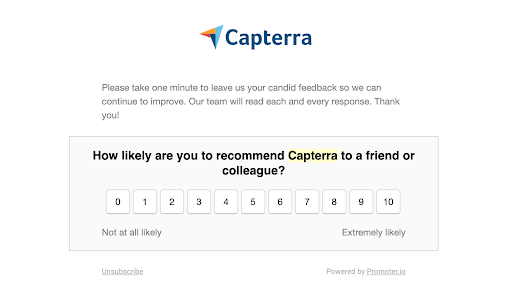
Chatbot
Chatbot – a bot can be your digital assistant to ask questions in a form of natural conversation.
Chatbot survey is an engaging form of collecting customer feedback. As a tool for measuring customer satisfaction, it can be used as a complementary channel for asking simple questions or as an independent touchpoint to provide detailed surveys.
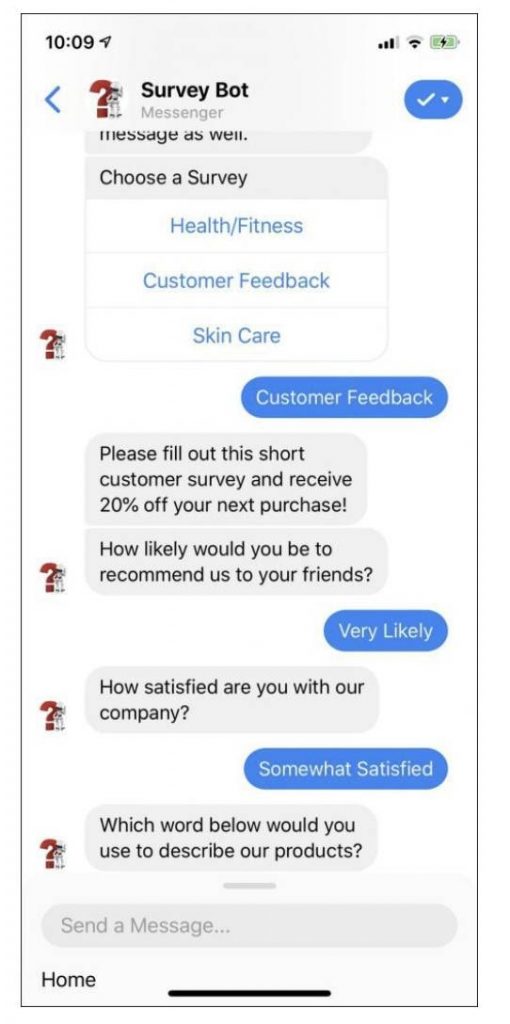
“Chatbots can be very helpful in serving the customer in real-time when humans aren't as available. They can also provide simple information to help the customer achieve a goal. Following up with a CSAT or CES transactional feedback touchpoint can help brands see if the chatbots are serving customers the way they want.” Jeannie Walters, Customer experience speaker and CEO, Experience Investigators
The conversational approach is a key feature that increases the chances of survey completion compared to other ways of collecting feedback.
Chatbot survey is:
- Engaging: the flow of a conversation will help you stand out from other surveys and attract attention. Talking to a chatbot feels like a human-to-human experience rather than completing a form all alone. Customers may not even notice how the questionnaire has begun as chatbots do the talk;
- Highly customizable: the chatbot is suitable for any type of question and answers: multiple choice, image choice, open phrases, and much more. Limitations may come with the channel specifics – like character limit – but overall, chatbots allow you to get 100% of the messaging potential.
- Flexible in responses: the learning abilities of chatbots allow you to create highly-adaptive surveys. For example, a trained chatbot can fetch the next question based on the user's previous response or have a few options for the survey ending. This way, you can keep the survey personalized and even provide timely offers if the customer shows a high interest in your product during conversation;
- Available on different platforms: depending on how your chatbot is built, it can potentially reach customers on Messaging apps (WhatsApp, Facebook Messanger, Viber, Telegram, etc), websites, and even SMS (yes, SMS chatbots do exist). Let’s not forget the voice bots that can be used as well.
There are a number of ready-to-use platforms specifically for creating surveys. For example, Rival Tech is a mobile-first platform that allows you to use chat surveys with video and media-rich activities to get better insights from your best customers on mobile. Inca is another AI-powered platform that uses engaging research conversations and custom natural language processing (NLP) to help you understand customer perceptions and motivations.
To start small, you can create a survey based on your existing chatbot. If you don’t have it yet, try out building your own chatbot.
“Chatbots certainly have their place when measuring customer satisfaction. I would use them with high volume touchpoint quantitative data.”Ben Motteram, Founding Principal at CXpert
Pop-ups
Pop-ups – create a pop-up to collect feedback right on the website. Perfect for NPS & CSAT scores.
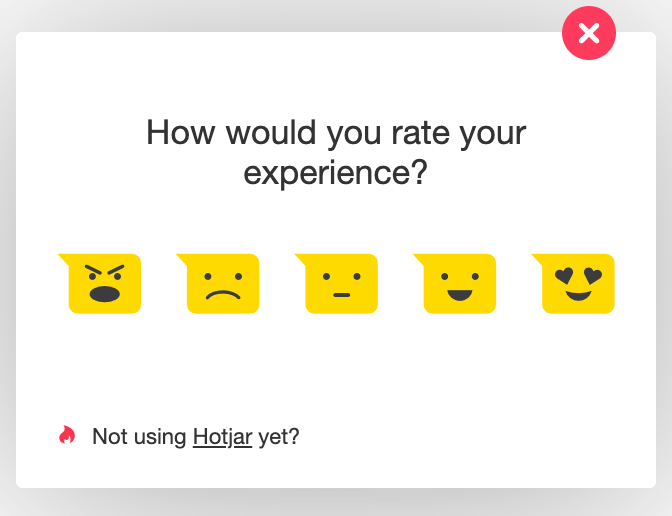
Widgets
Widgets – use widgets to send feedback surveys while a customer is on your website.
Customer Interview
Customer Interview – conduct a customer interview to collect feedback. Some customers will be happy to share their thoughts about your brand, or sometimes you may offer them an incentive for their feedback.
Feedback Form
Feedback form – send a survey via email to collect customer feedback or through a Survey QR code using a QR code generator.
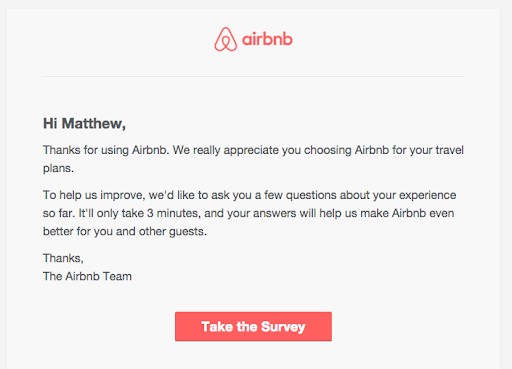
Social Media
Social Media – monitor mentions of your brand on social networks. Some tools can help you with that: Hootsuite, Sprout Social, Agorapulse, Brand24, etc.
Exit Intent Feedback Form
Exit intent feedback form – ask your customers for feedback when they are trying to leave your website or abandon their order. Check out the best practices for exit-intent surveys here: Website Exit Survey: Get Feedback Before Your Visitors Leave.
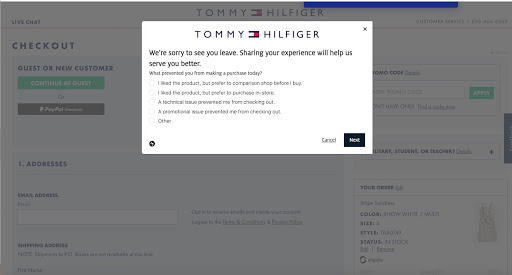
Monitor Other Sites
Monitor other sites – there are plenty of different reviewing/rating platforms and sites like TripAdvisor, Capterra, G2, Clutch, Yelp, etc. Monitor these platforms to hear what customers are saying about your products.
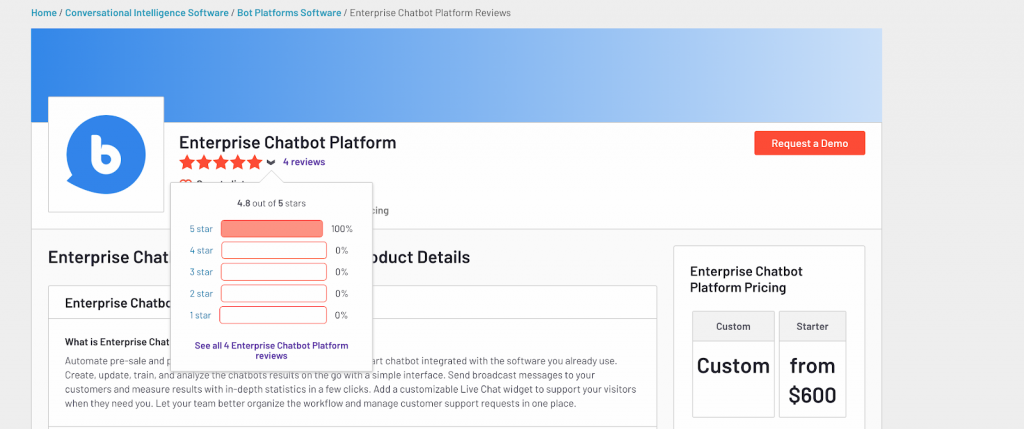
Live Chat Feedback
Live chat feedback – ask for feedback right after live chat interaction.
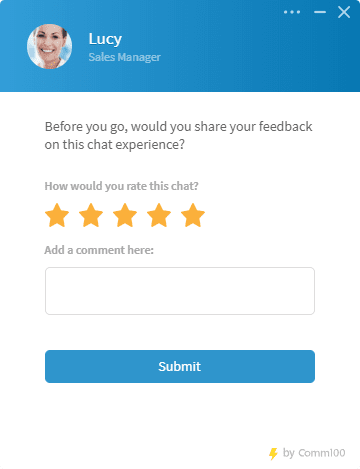
Final Thoughts
Customer satisfaction can be measured on different levels: customer- or business-based, qualitative or quantitive. The most important question is how to work with that data later.
Here’s how experts advise working with these metrics.
“The number one way to understand customers is to gather feedback consistently. Asking customers for specific feedback and watching the CSAT score can enlighten organizations to where there is the disappointment they need to address." Jeannie Walters, Customer experience speaker and CEO, Experience Investigators
“In some industries, a 1 % increase in retention rates can mean millions of dollars in revenue. Happier customers mean they will stay longer as a customer, and the brand won't have to spend additional dollars on acquiring them.” Jeannie Walters, Customer experience speaker and CEO, Experience Investigators
“Generating repeat purchases is comprised of three primary components; hope, trust, and intimacy. Hope is achieved by making the customer feel welcomed. This is especially valid for online sites. It's critical to engage the customer before trying to sell them. Trust is developed by the competency of your sales associates and the accuracy of your site. Return policies also factor into the level of trust. Lastly, brands must show consumers they care about them after the sale. Sending daily promotions does not demonstrate appreciation. Having a friendly and accessible customer service department and access to a human when AI doesn't work makes customers want to continue to do business with your brand over others." Richard Shapiro, Founder & President, The Center For Client Retention
“Satisfaction doesn't translate into loyalty. It helps, of course. Nobody likes to be mistreated or disrespected. Customer Satisfaction is a very first step on a long road towards customer-centricity. Suppose you want to truly understand what motivates your customers to buy, re-buy or continue to subscribe to your products/services. In that case, you need to go deeper than Customer Satisfaction alone." Mary Drumond, CMO at Worthix




